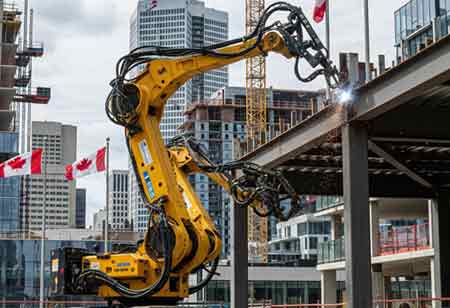Thank you for Subscribing to Construction Business Review Weekly Brief
Specials
- Apartment and Condominium Contractors Canada
- Decking Canada
- Architectural Glass Europe
- MEP APAC
- Construction Saudi Arabia
- German Apartment and Condominium Contractors
- Construction Law APAC
- Outdoor Construction
- Foundation Construction Canada
- MEP Canada
- Kitchen and Bath
- Cold Storage Construction APAC
- Precast Concrete Europe
- Construction Staffing Europe
- Pre-Construction Services
- Flooring System APAC
- Scaffolding Canada
- Swimming Pool Construction Canada
- Construction Management Canada
- Cold Storage Construction Canada
- Flooring Systems Europe
- Residential Construction
- Concrete Canada
- Construction Cladding Europe
- Construction Cladding APAC
- Concretes, Aggregates and Construction Materials APAC
- Concretes, Aggregates and Construction Materials Europe
- Commercial Contractors Europe
- Commercial Contractors APAC
- Dummy
- Construction Insulation, Coating and Waterproofing
- Construction Management APAC
- Landscaping Canada
- Construction Coating Europe
- Construction Tech Startups Europe
- Insulation Services Europe
- Mechanical Contractor Canada
- Mould Remediation and Testing Europe
- Swimming Pool Construction APAC
- Building Sealing Solutions Europe
- Construction Engineering Services
- Mechanical Electrical and Plumbing
- Roofing Systems Europe
- Architectural Glass APAC
- Startups APAC
- Construction Forensic and Owners Representative
- Flooring System
- Waterproofing APAC
- Wall Systems
- Safety and Compliance Europe
- Construction Bidding and Auctions
- Modular and Prefab Construction
- Architectural Glass
- Construction MENA
- Construction Demolition and Recycling Europe
- Modular Construction Europe
- Construction Interiors
- Steel Building APAC
- HVAC
- Doors and windows
- Construction Latam
- Building Information Modeling APAC
- Sustainable Construction APAC
- Building Restoration and Maintenance
- Commercial Contractors
- Specialty Construction
- Construction Engineering Canada
- Construction Engineering MENA
- Modular Construction Canada
- Modular Construction APAC
- Roofing and Siding Systems
- Workforce Management and Staffing
- Roofing Systems APAC
- Construction Consulting
- Steel Building Europe
- Construction Demolition and Recycling APAC
- Safety and Compliance APAC
- Concretes, Aggregates and Construction Materials
- Construction Cladding
The Rise of Construction Robotics: Implications for Labor and Safety in Canada
The Canadian construction industry is undergoing a transformation through the use of robotics, which is enhancing safety, efficiency, and workforce dynamics while addressing challenges such as job displacement, requiring strategic investment a

By
Construction Business Review | Monday, August 11, 2025
Stay ahead of the industry with exclusive feature stories on the top companies, expert insights and the latest news delivered straight to your inbox. Subscribe today.
Fremont, CA: The Canadian construction industry, a vital economic pillar, is poised for a significant transformation through the increasing integration of robotics and automation. These technologies, encompassing bricklaying robots, autonomous excavators, and drone-based inspection systems, are expected to overhaul infrastructure development, with substantial consequences for the workforce and occupational safety.
The Technological Tide: What Robots are Bringing to Construction
The integration of robotics into the Canadian construction sector has transitioned from a futuristic concept to a present-day reality, with a growing range of practical applications transforming project execution. Automated material handling systems enable robots to lift, transport, and position heavy materials, significantly reducing physical strain on workers. Advancements in 3D printing technology allow for the fabrication of entire structures or modular components, both on-site and off-site, with enhanced speed and precision. Robotic welding and painting systems perform repetitive and hazardous tasks with improved consistency and efficiency. At the same time, autonomous earthmoving equipment, guided by GPS, can complete excavation and grading operations with minimal human intervention. Additionally, drone-based inspection and monitoring capabilities, equipped with advanced cameras and sensors, facilitate comprehensive site surveys, progress tracking, and hazard detection from an aerial perspective.
Enhancing Safety: A Key Driver for Adoption
One of the most compelling arguments for adopting construction robotics is its potential to enhance workplace safety significantly. The construction industry is inherently high-risk, with numerous hazards that can lead to serious injuries and fatalities. Robotics can take on tasks that are physically demanding, thereby reducing the risk of musculoskeletal disorders. It also minimizes repetitive tasks, reduces fatigue and associated errors, and eliminates dangerous tasks, such as handling hazardous materials or working at significant heights, without exposing human workers to direct danger. By automating these activities, robotics can foster safer work environments, lower accident rates, and ultimately save lives. For example, drones can be deployed to inspect bridges or high-rise buildings, eliminating the need for human inspectors to operate in precarious positions.
In the Canadian context, navigating the transition to construction robotics requires a strategic and coordinated approach. This includes sustained investment in research and development to create technologies suited to Canada’s specific needs and conditions; the establishment of robust industry standards and regulations to ensure safe and effective deployment; and active collaboration between industry stakeholders, government bodies, and labor unions to address job displacement concerns and facilitate a smooth workforce transition. Equally important is the commitment to training and education, ensuring that Canadian workers are equipped with the skills necessary to operate alongside and manage robotic systems effectively.
The proliferation of construction robotics in Canada presents both challenges and substantial opportunities. While apprehensions regarding labor displacement are legitimate, this technology also holds the promise of generating novel, higher-skilled occupations and, critically, enhancing the safety of construction environments. Through proactive measures in workforce education, the establishment of pertinent regulations, and the cultivation of collaborative efforts among stakeholders, Canada can leverage the capabilities of robotics to forge a more efficient, productive, and secure construction sector for the future. The fundamental principle resides not in perceiving robots as substitutes for human labor but rather as invaluable instruments capable of augmenting human proficiencies and contributing to a more robust and resilient Canadian infrastructure.





